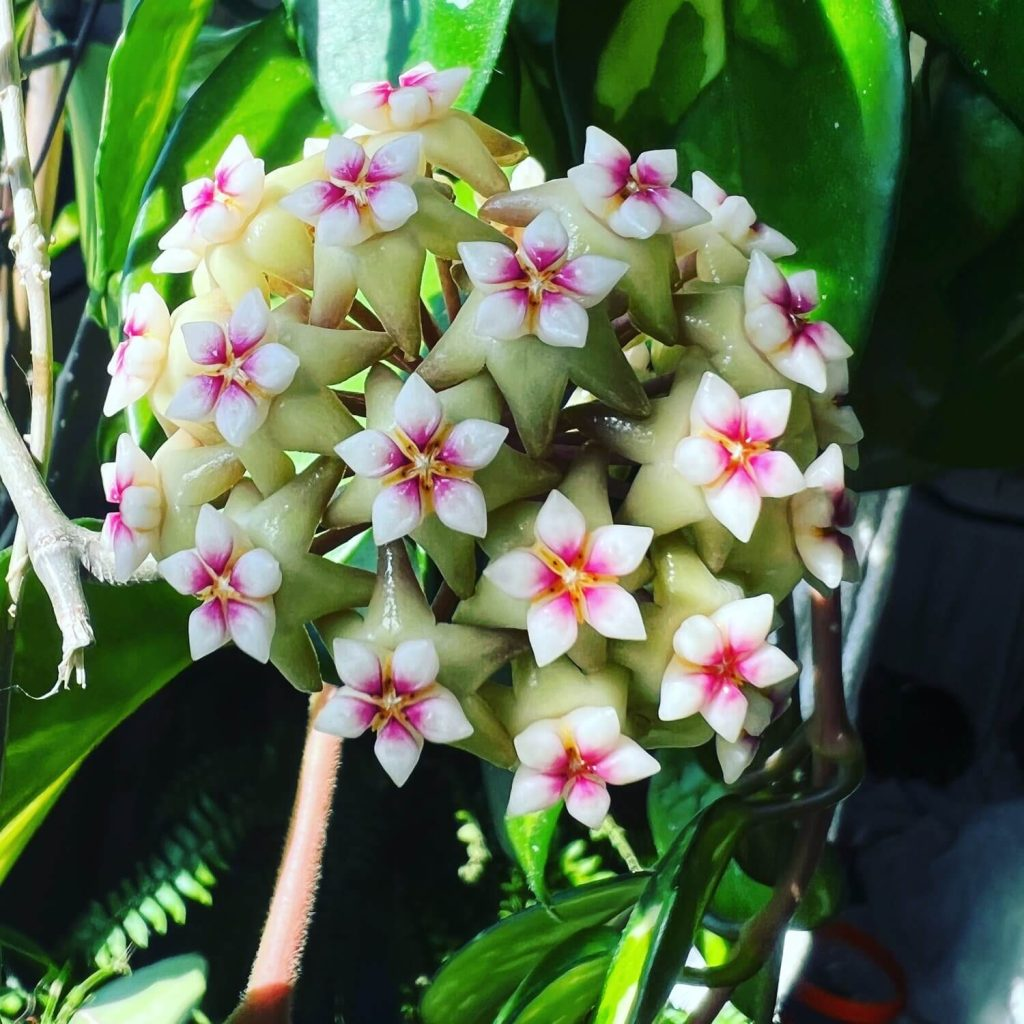Hoyas, colloquially referred to as wax plants, porcelain flowers, or honey plants, originate from Asia and share a botanical kinship with milkweed. These plants boast aromatic and effortless-to-care tropical blossoms that cluster into globular formations. Their structure comprises lignified stems adorned with lustrous, evergreen foliage.

Cultivating a Hoya plant offers versatility; it may be trained to ascend as a vine or allowed to cascade gracefully over its container’s brim. Regardless of its growth direction, the plant’s length or stature typically ranges from 2 to 4 feet. Cultivation requisites include exposure to bright yet diffused sunlight for a duration spanning up to six hours daily, a soil milieu that is moderately hydrated yet well-aerated, and necessitates periodic drying between irrigation. Additionally, the plant thrives under consistent misting and requires equilibrated fertilization on a monthly schedule.

Key guidelines for nurturing hoyas encompass:

- Ensuring outdoor plantation during the vernal or early estival seasons in areas bathed in bright, filtered luminosity.
- Opting for suspension in a hanging basket or support against a diminutive trellis, thereby adding a vertical dimension to your tropical flora ensemble.
- Sustaining a humid environment for the Hoya, potentially by positioning it near aquatic features such as ponds or fountains.
- Preferring soil that is moderately moist yet possesses efficient drainage capabilities; it is crucial to allow the soil to desiccate between watering episodes.
- Administering a balanced, slow-releasing nutritive supplement monthly.

Regarding specific care facets:

Light: Optimal growth is observed when Hoyas are subjected to bright, indirect solar rays, ideally for a period between two to six hours daily.
Soil: These plants favor a light, well-drained soil composition, with a pH leaning slightly acidic to neutral (6.1-7.5).
Hydration: Weekly watering is advised, ensuring the soil is thoroughly arid prior to the subsequent hydration. Overwatering can lead to root decay.
Climatic Conditions: Being tropical in nature, Hoyas flourish in environments that are both warm and humid.
Nutritional requirements: Monthly fertilization is recommended. The International Hoya Association advocates for a fertilizer blend rich in nitrogen, phosphorus, and potassium.




